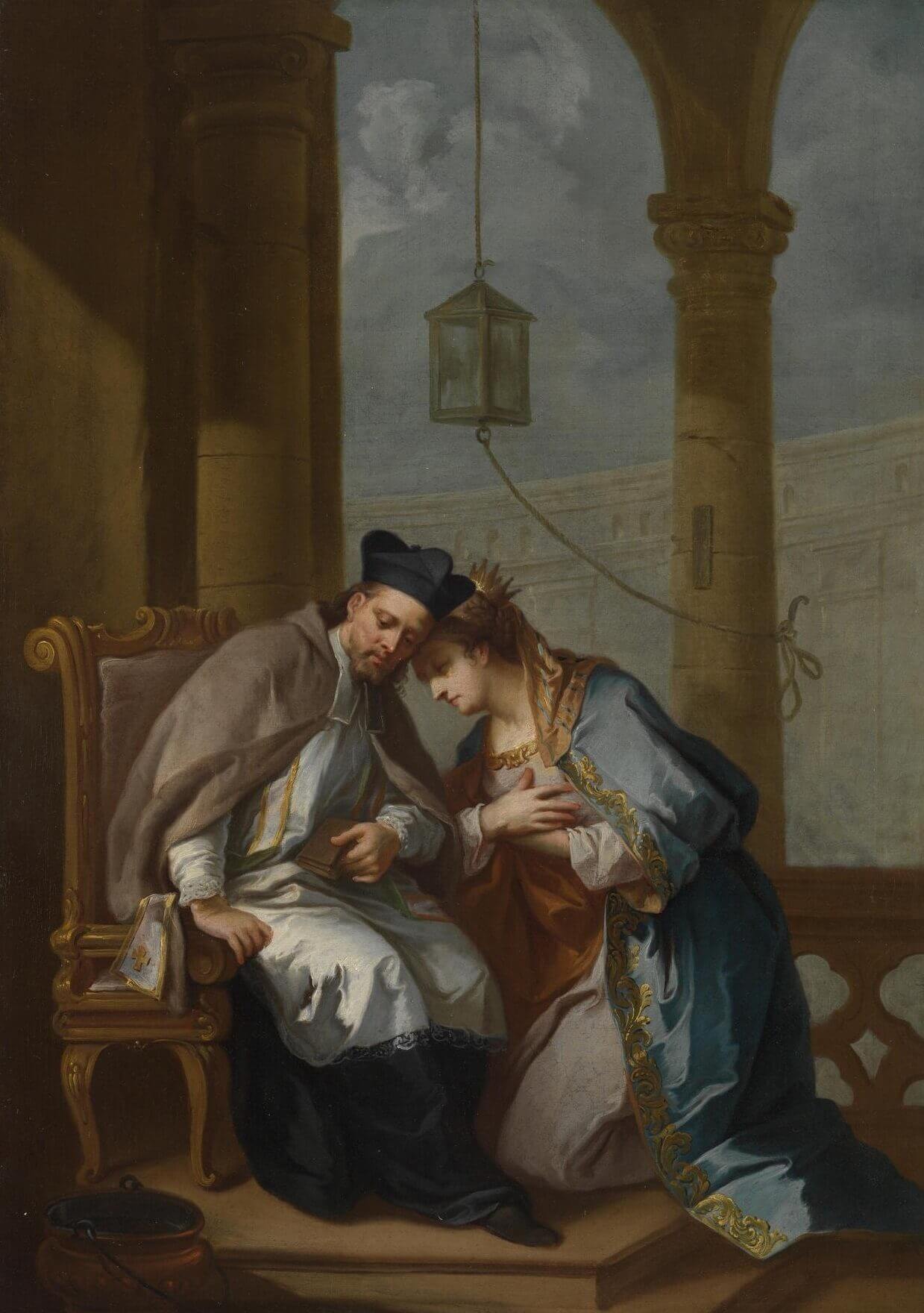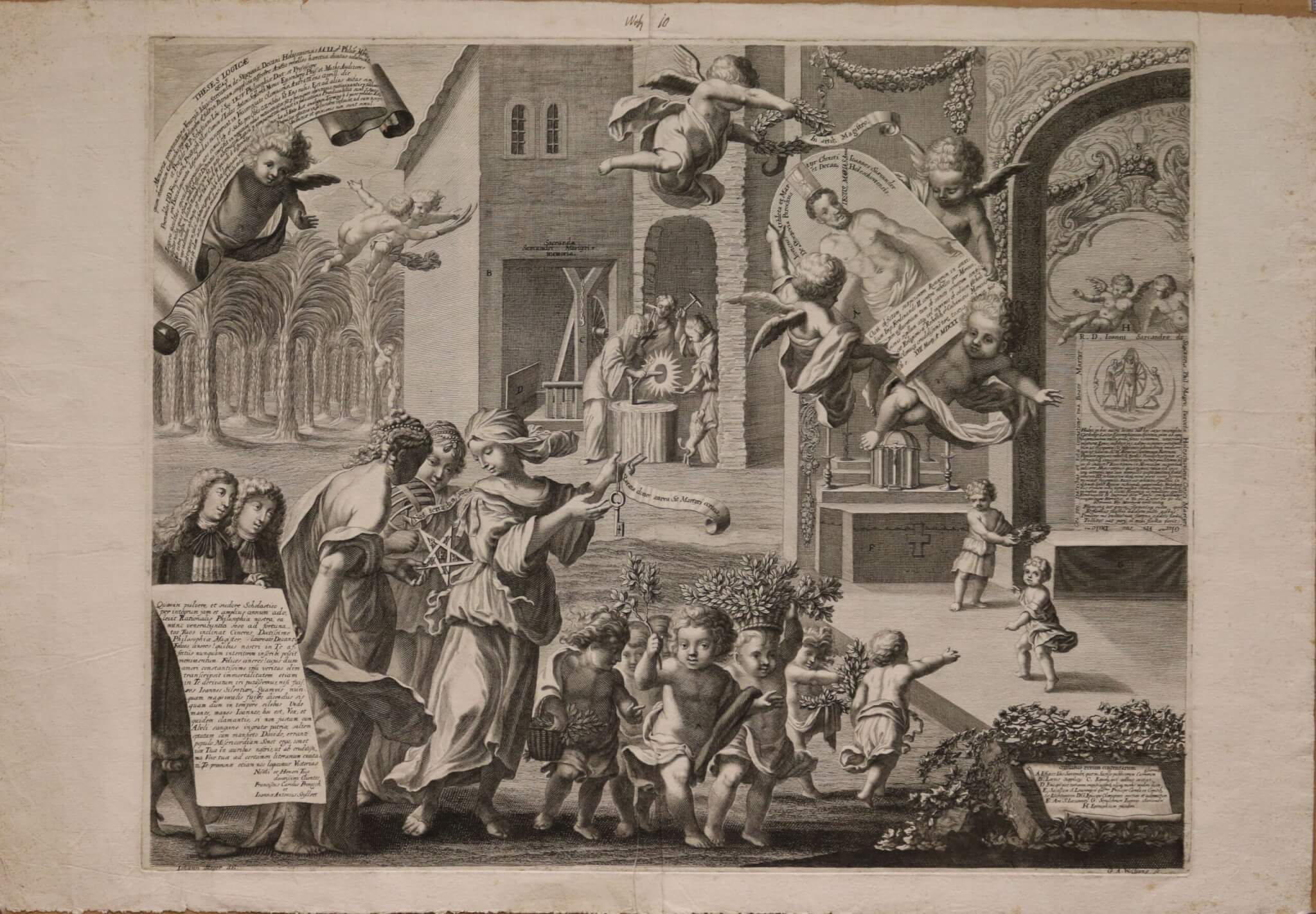John and John

They were real celebrities in the Baroque period, although they didnt enjoy it much as martyrs who, according to legend, died to protect the confessional. Both Jan Nepomucký and Jan Sarkander were among the most popular saints of Baroque Moravia and it is to them, or rather to their depiction in art, that the new exhibition at the Archdiocesan Museum Olomouc, entitled simply Jan and Jan, belongs.
As the subtitle of the exhibition suggests – Legends of Jan Nepomucký and Jan Sarkander in visual art – the majority of the works are connected with the stories that were created around the fates of both saints. “We offer visitors over sixty works referring to both saints. There are medals, devotional prints, sculptures and monumental altarpieces. Certainly interesting are the graphic works that were published in large editions, were financially accessible to the general public and through them spread respect for the saints not only in our country but also to the world,” says the author of the exhibition Simona Jemelková.
THE LIFE AND DEATH OF JOHN AND JOHN
Jan or also Johanek of Pomuk, later known as Jan of Nepomuk, was a priest, vicar general of the Archbishop of Prague, John of Jenštejn. He is venerated as a martyr of the Catholic Church and one of the patron saints of the Czech lands. Born around 1340 in Pomuk, he had a distinguished ecclesiastical career, but eventually fell victim to disputes between King Wenceslaus IV and the archbishop. He was arrested by the kings retinue on 20 March 1393, subsequently underwent torture, perhaps in the presence of the king, and eventually his dead body ended up in the Vltava River.
“A legend of his martyrdom and holiness developed very quickly. He was identified as a confidant and confessor of Queen Sophie and it began to be claimed that he was killed because of a confessional secret he had refused to reveal to Sophies husband, the king. Reverence for him began to grow, especially after the Thirty Years War in the second half of the 17th century, and at the same time, efforts began for his official canonisation, which culminated in the first quarter of the 18th century.
They were real celebrities in the Baroque period, although they didnt enjoy it much as martyrs who, according to legend, died to protect the confessional. Both Jan Nepomucký and Jan Sarkander were among the most popular saints of Baroque Moravia and it is to them, or rather to their depiction in art, that the new exhibition at the Archdiocesan Museum Olomouc, entitled simply Jan and Jan, belongs.
As the subtitle of the exhibition suggests – Legends of Jan Nepomucký and Jan Sarkander in visual art – the majority of the works are connected with the stories that were created around the fates of both saints. “We offer visitors over sixty works referring to both saints. There are medals, devotional prints, sculptures and monumental altarpieces. Certainly interesting are the graphic works that were published in large editions, were financially accessible to the general public and through them spread respect for the saints not only in our country but also to the world,” says the author of the exhibition Simona Jemelková.
THE LIFE AND DEATH OF JOHN AND JOHN
Jan or also Johanek of Pomuk, later known as Jan of Nepomuk, was a priest, vicar general of the Archbishop of Prague, John of Jenštejn. He is venerated as a martyr of the Catholic Church and one of the patron saints of the Czech lands. Born around 1340 in Pomuk, he had a distinguished ecclesiastical career, but eventually fell victim to disputes between King Wenceslaus IV and the archbishop. He was arrested by the kings retinue on 20 March 1393, subsequently underwent torture, perhaps in the presence of the king, and eventually his dead body ended up in the Vltava River.
“A legend of his martyrdom and holiness developed very quickly. He was identified as a confidant and confessor of Queen Sophie and it began to be claimed that he was killed because of a confessional secret he had refused to reveal to Sophies husband, the king. Reverence for him began to grow, especially after the Thirty Years War in the second half of the 17th century, and at the same time, efforts began for his official canonisation, which culminated in the first quarter of the 18th century.
John Sarkander was also a Catholic priest. He was born in 1576 in Skočov, Silesia, and from 1607 he worked in several Moravian parishes, especially in Uničov and later in Holešov, where he became a confessor to the Moravian governor Ladislav Popel of Lobkovice. In February 1620, at the beginning of the Thirty Years War, during the Czech Estates Uprising, he was accused of treason by the Moravian Protestant Estates. He was alleged to have called in an army of Polish Cossacks, the so-called Lisovciks, who were plundering Moravia. He also allegedly secretly negotiated with Emperor Ferdinand II against the Protestant Estates. Sarkander was arrested and interrogated under torture in an Olomouc prison. Despite his terrible ordeal, he rejected the accusation that he had initiated the invasion of the Polish army and conducted secret negotiations in Poland. He also refused to divulge information from Ladislav Popel of Lobkowitz, claiming that he would reveal confessional secrets. After the torture he remained in prison without trial, where he died four weeks later on 17 March 1620 from the effects of torture.
“The martyrdom of the priest immediately caused considerable outrage in the divided country. His cult as a martyr soon spread not only in Moravia, but also in Poland and Bohemia. Efforts to canonize him in the first half of the 18th century in parallel with John of Nepomuk were unsuccessful. He was beatified on 11 September 1859 and his canonisation was completed on 21 May 1995, when Pope John Paul II canonised him in Olomouc at the same time as Zdislava of Lemberk,” explains Simona Jemelková.
The two Janes are thus linked not only by a similar tragic fate, but above all by the legend of keeping a confessional secret that they did not reveal despite cruel torture. “This became the basis for their veneration and eventually led to their canonization and designation as patrons of the land, even though the two events were separated by more than 200 years and happened under completely different historical circumstances. In the case of John of Nepomuk, it was primarily the political disputes of the difficult time of Václav IV. In the case of Jan Sarkander, it was a period of religious controversy that led to the horrors of the Thirty Years War, in the beginning of which he sacrificed his life to his views, his truth, his priestly mission,” says Simona Jemelková.
BAROQUE – THE PROMISED AGE OF BOTH JOHNS
Veneration of the two saints flourished most during the Baroque period, in the 17th and 18th centuries. It was a time of fervent Christian faith, a time when Catholic Christianity was revived after the horrors of the Thirty Years War. Associated with this was an upsurge in outward expressions of faith, such as pilgrimages, celebrations of church festivals, and the grandiose conception and monumental proportions of architecture and art, which were intended to impress the faithful and underline the sense of the transcendence of Gods greatness. Reverence for Christian saints is an integral part of this, and it was John of Nepomuk and John Sarkander who were included among the earthly patrons to whom the greatest reverence was given.
“We must also remember that the Christian Catholic faith has in the past been an integral and direct part of the life of the whole society. Christian themes predominated in the visual arts, and the theme of favourite saints was therefore very common. This is also why the two Johns were frequent subjects of artworks. For example, the theme of Saint John on the bridge can be found in almost every village, which is just a small example of folk piety,” Jemelková emphasises.
After the Enlightenment and the revolutions of the late 18th and first half of the 19th century, when the strained Baroque Catholicism was rejected and anti-Catholic attacks were frequent, the second half of the 19th century brought a certain revival of the Christian Catholic faith and veneration of the two saints came to the fore again. This was reflected in the beatification of John Sarkander in 1859. The third period of growing interest, this time especially in Jan Sarkander, came after the November Revolution, when Pope John Paul II declared Jan Sarkander a saint during his visit to Olomouc in 1995.
“The connection between these two personalities is traditional – Jan Sarkander was perceived as a follower of Jan Nepomucký, he was called his Moravian brother, but also his twin or twin brother or directly Moravian Nepomuk. Jan Nepomucký was sometimes presented as a model of Jan Sarkander. Despite the fact that both Johns were the object of veneration in the Czech lands, they were also seen to some extent as Jan Nepomucký representing Bohemia, while Jan Sarkander was primarily the patron saint of Moravia,” Martina Potůčková adds. In visual art, the two Johns are also often depicted together, as the Olomouc exhibition shows.
WHAT NOT TO MISS?
For the first time ever, visitors will have the opportunity to see recently restored paintings by the German painter Julius Muhr, who worked in Rome in the 1850s. The exhibition includes his much-appreciated canvas from 1853 to 1855, depicting the preparatory beatification meeting of 11 September 1855 in the Sistine Chapel. “This monumental work was commissioned by the Privy Chamberlain of Pope Pius IX and later the Chapter Dean of Olomouc, Robert Maria Count Lichnovsky. We know him mainly as the initiator of the major structural modifications of the Olomouc Chapter Deanery, i.e. the buildings of todays Archdiocesan Museum. However, he also had a great contribution to the successful completion of the beatification process of Jan Sarkander, of which this picture is proof. In the Sistine Chapel, the author captured a large college of cardinals and prelates, headed by Pope Pius IX, enthroned under a canopy,” says Martina Potůčková. “The cardinals, and even the pope, sat in succession to Muhrs model, so that many of them can be identified.”
With the second painting on display, from 1856, Muhr created a new type of Sarkander depiction that highlights the martyrs exemplary piety. Here John is depicted praying. The painter received this commission from Cardinal and Papal Secretary of State Giacomo Antonelli, who organized the entire celebration of John Sarkanders beatification in St. Peters Basilica at the Vatican. “An interesting circumstance is that the painter was modelled by a freed slave who had the very expressive face and demeanour of a saint. This man was sent to the painters studio by Antonelli himself. After this beatification painting reached Olomouc, it became a model followed by local artists,” Potůčková adds.
EXHIBITION: John and John. Legends of John of Nepomuk and John Sarkander in Visual Art
OPENING: 05 10 2023 at 18:30
DURATION: until 28 01 2024
PLACE: Archdiocesan Museum Olomouc, Gallery
AUTHOR, CURATOR: Simona Jemelková
GRAPHIC DESIGN: Vladimír Vaca
Toby Pospíšilů, Ondřej Žák
INSTALLATION: Vlastimil Sedláček, Filip Šindelář, Ondřej Žák
TRANSLATION: Zuzana Henešová







